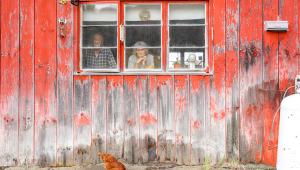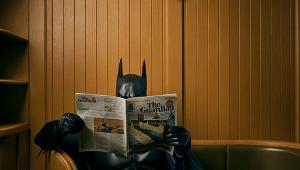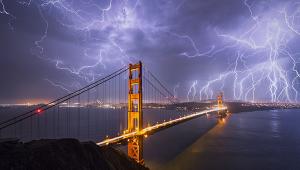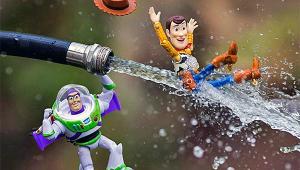For Advertising Photographer Dixie Dixon, Big Production Shoots Require Skill And Strategy

All Photos © Dixie Dixon
The first shots count.
Unlike landscape, portrait, wildlife, or even sports photographers, the first shots taken these days by advertising photographers on the job are almost always instantly seen and judged—by the client, the client’s representative, an agency rep, or an art director. Pressure, anyone?
So, says advertising, fashion, and lifestyle photographer Dixie Dixon, “You have to know how to shoot really good images right out of the camera, right from the start, because those images are popping up immediately on a monitor or laptop on set.”
Fortunately, Dixon not only has skill, but a strategy going for her. “Usually I have my producer sort of grab the client when I’m first starting to shoot and distract him so I can get in the zone,” she says. And because it takes everyone a little while to warm up, advertising photographers know it’s a bad idea to start with the harder, more complicated shots. “When I first got started in the business,” Dixon adds, “I liked shooting to the CompactFlash cards because I didn’t want people instantly seeing my work. It was intimidating.”



What was most intimidating, though, was her first big production job. “I think it would have been helpful to have assisted an advertising photographer,” she says, “but maybe it was best that I just didn’t know what I could do wrong. I knew how to create images, but I’d never worked with a big crew, never had to deal with all the people and their personalities, or figure out the production side of things. In a way, I was in over my head.”
But she got through it, and she delivered what the client wanted. Most important, she learned something invaluable: “After doing that, after having to shoot in that situation, a moment clicked for me: this is exactly what I want to be doing. The whole huge production gave me an adrenaline rush, and I was really in the zone, loving what I was shooting. And I learned that the more you click that shutter, the more confidence you build, the more problems you’re solving in your head. It becomes a habit, almost a method, and you’re going to be able to do bigger and bigger jobs. You’re moving up the ladder, rung by rung. If you like the work, if it’s your passion, your confidence will grow from the first job.”


Behind The Scenes
In an advertising photo you might see a pillow fight in progress; or a traveler relaxing off the road; or an office worker imagining a different kind of keyboard on his desk. But of course, it’s who and what you don’t see—the hair and makeup artists, wardrobe stylists, set decorators, all the props and equipment—that makes advertising photography the realization of the impossibly attractive.
In charge of bringing it all home are the photographers. Some, it is said, walk onto the set after all is prepared, make minor adjustments and push the shutter buttons. Dixie Dixon isn’t one of those. “I’m involved in every single part of the shoot,” she says. “I need to have an understanding of all the processes because it’s hard to direct someone unless you know not only what you’re looking for, but also the basics of how to get it.”
Dixon often shapes a shoot from conception to execution. “Some clients have a firm vision; others want me to take an idea and run with it,” she says. “When I started out, the art director would have the vision and I’d have to stick closely to it. Fair enough—that’s the nature of the business, and it’s how everyone starts. But what I would do was get the exact shot he was looking for, and then I’d try to give him something he didn’t know he was looking for—which was my vision, basically. I’d try to create something I thought would be really spectacular. And now that I’ve been working a lot, people are starting to hire me for my vision. It’s a cool place to be.”


A recent campaign, for Piper’s Perfumery, is a case in point, as the inspiration images the client sent to Dixon were her own photos. “They were from my website—that was really neat, that my previous work was the basis for a new campaign. I couldn’t have been more excited to shoot that job. I knew they liked my style and vision, and I got to collaborate with the art director. And I had a dream team for that job, too.”
There’s no underestimating the importance of the team that helps her create the images. “When I first got into the business,” Dixon says, “I didn’t know many people, so it was tougher, but the more jobs you do, the more you network, and you start finding people you really like working with and who creatively inspire you on the job. I’ve found the people, the team I love working with. They’re not only great at what they do—lighting, hair, makeup, wardrobe—but they also have really high energy. They’re excited about being there, stoked about the shoot, and that keeps me in my zone.”
The team extends to the models, too. “I love to be part of the casting,” Dixon says, “and I try to meet the models in person before the job, because you never know. I just like to get to know them a little bit, get them to open up. I do this thing when they show up—I’ll try to give them a big hug—I always hug everyone—and the more standoffish they are, the longer it’s probably going to take me to get them to open up in the pictures.”
On a Dixie Dixon shoot, everybody is expected to bring it.


Elements Of Style
Technical expertise is a given for the kinds of results the business demands, and knowing you have it is a big confidence builder. A key factor in the look of Dixon’s images is lighting, and her lighting style calls into play everything from constant lights to Speedlights to studio and location strobe setups, plus all the modifiers needed to make the light do what she wants it to.
“I’ll go with my lighting guy to a video rental place,” she says, “and we’ll pick out the kind of lighting we’ll need. Sometimes we get both HMIs—essentially they’re movie lights—and strobes, depending on the budget. Strobes will keep things in sharp focus, but if I want a more moody look to the image, I’ll go with the constant light so I can open up a lens to f/2.8 and get soft-focus backgrounds.”
Dixon shoots these days with Nikon D4S and D810 full-frame digital SLRs, and she’s a big fan of the Nikkor prime lenses. She’ll use the 35mm f/1.4 for locations in which the client wants a lot of background with models appearing relatively small in the frame. She also likes the 58mm f/1.4—“it seems our eyes see more 58mm than 50mm, and I get a beautiful bokeh with it”—as well as the 85mm f/1.4, the 200mm f/2, and the 180mm f/1.8. “I think single focal length lenses make me more creative. I like to be my own walking zoom. I tend to walk around a location while the models are in hair and makeup, and I think about the compositions I want. I’ll often be with my lighting guys, figuring out the best spots.”

Repeat Business
“With the big production advertising shoot, it’s all about confidence, expertise, the right equipment, and personalities,” Dixon sums up. “But creating great images for the clients is expected. I think that what gets them to hire you over and over again is the experience you create for them on set. People love working with people they love to work with, people they have fun around. We have music playing, we create really great energy, we have a huge wrap party at the end with everyone cheering for everyone. All of that is going to increase the chances of them hiring you again because they’re always going to remember how you made them feel on set. It’s more than great results, it’s a great time.”
To get an idea of what Dixie Dixon means, you might like to check out the behind-the-scenes videos for the Piper’s Perfumery, Virgin Pulse, and Woodland Worldwide shoots at vimeo.com/107166528; vimeo.com/81445248; and vimeo.com/108521413. The thing is, watching any one of these videos will likely make you want to change your occupation. Watching all three might just drive you to do it.
You can view a range of Dixie Dixon’s images at her website: www.dixiedixon.com.
- Log in or register to post comments

















































